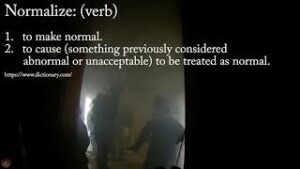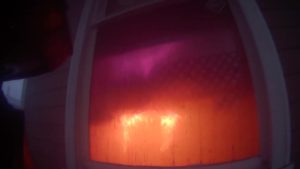Reach of The Stream and the power of headers. We talk a lot at WCFT about the importance of using the reach of the stream. However, sometimes it is hard to capture exactly what that means and why it is important. For those folks with less experience, it is hard to visualize. They often ask, “When should I flow? From where? At what angle?
For those with more experience, it often feels unnecessary. This is especially true for those who have been taught to move forward without flowing water until they can see the fire. “I never felt in danger. It was not that hot. Why should I flow water?” are common refrains we hear.
At a recent fire, a real one this time not a training burn, my crew and I were able to observe, once again, the value of using the reach of the stream. This fire started on the floor one back deck of a one and a half story with a basement. It quickly moved into the kitchen and up the outside of the back of the house into floor 2. The choice was made to advance the first line through the front door to place water between the fire and interior exposures and protect the truck that would quickly be searching the half-story above.
When the truck forced the door, we were met by black smoke under low to moderate pressure. After advancing past the threshold the nozzle opened the line (spot #1) and flowed water starting high and worked the stream out through the smoke layer until the nozzle was pointing almost straight ahead then shut down. We then advance forward until we were about eight feet inside the house, (spot #2) and he flowed again in the same way. Once again, we advanced. This time we arrived at the kitchen. Most of the fire in the kitchen was already extinguished. With the light from the fire on the deck and the ventilation out the back windows, we were able to stand up, knock down the hot spots in the kitchen and work our way to the deck. We never experienced significant heat.
This house was around 30 feet deep. By flowing from the door, (spot #1) the nozzle was able to cool the overhead and put water all the way into the kitchen. I am sure that on the second hit (spot #2) water made it all the way out the back windows and on to the deck. Had he not done this the fire would have been much larger in the kitchen when we arrived and may have extended into the hallway. The nozzle team and I could easily have taken the increased heat as we advanced, and the nozzle had the gpm to control a larger fire. However, it would have resulted in more damage to the home and the possessions within and would have meant that the truck, which was moving to floor two ahead of the hose line, would have undoubtedly experienced higher heat conditions.
In this case, using the reach of the stream did not result in a life saved and it was not the difference between winning and losing at this fire. It was just the right thing to do.
On a side note. Observe the difference in charring from one space to the next. The header from room to room is what made all the difference. Headers hold heat. This is why we must take a moment to reevaluate once we enter a new space. Conditions can vary dramatically.






